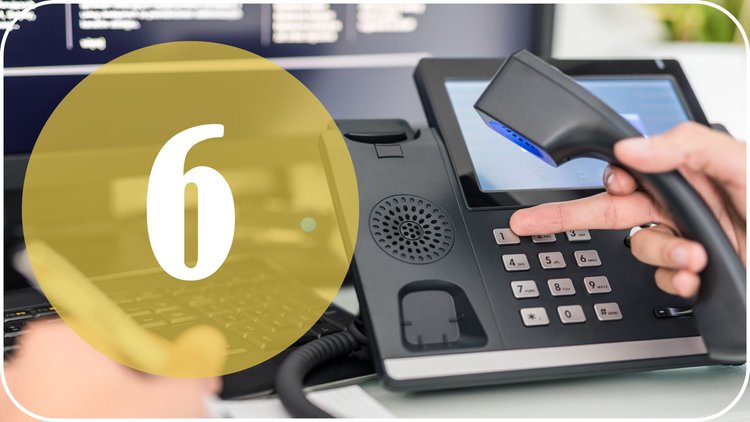Almost half of all companies in the UK use or are planning to use a hybrid work model. After the COVID-19 pandemic, when remote work became far more popular and companies saw the benefits of utilising it, hybrid is the new normal — and it’s here to stay.
But some companies have hesitation about the level of productivity hybrid facilitates or how their employees will settle into this ‘new normal’. Never fear — a hybrid workplace can be an even more collaborative environment than an in-office one, if you know how to make use of the structure.
9 effective collaboration tips to implement at work
Here are the tips you should bear in mind for your hybrid work model:

1. Schedule Office Time
When your employees work from home a lot of the time and only enter the office sometimes, it’s easy to feel as isolated as they might with a wholly remote work model. They might pop into the office on a day where none of the rest of their team is in, or — if the office is completely optional — they might end up skipping it altogether.
This is why it’s important to schedule the office time ahead of time. You can let employees choose the days they’ll be in, but try to encourage that it’s spent with their team rather than going in alone. Otherwise, they might as well be working from home that whole time!
You could also choose the days they should be in and relay the information to them, but make sure you’re taking their feedback on board and it’s days that are convenient for them too. When the main benefit of a hybrid work model is the flexibility, you don’t want to take this away and invoke resentment in your workplace.

2. Lead With Empathy
During COVID-19, the amount of remote work began to steadily climb until most people who could were working from home. This was new to a lot of people, including managers who are still settling into the idea of not being able to monitor their employees at all times.
Working from home can be a lot more distracting. Packages get delivered and couriers knock on the door, power or WiFi gets knocked out, and kids or roommates want to frequently interrupt. Does this mean productivity decreases?
Not necessarily.
Research has revealed that despite these distractions, remote work is responsible for a boost in productivity. People work harder to compensate for the very small things that may pull them away from their jobs.
So, on the days when your employees at home, lead with empathy and be patient about these small distractions. If someone’s work is slipping, you can talk to them about it, but there’s no need to be concerned about a barking dog interrupting someone’s meetings on occasion if their output is stellar.

3. Set Up Virtual Meetings and Check-ins
When you aren’t in the office with everyone, it’s still important to set up meetings and check-ins for a productive work environment. This may be as simple as shooting a message to employees on your Microsoft software or Slack every remote day to ask if they need anything, or you can set up a quick team video call to discuss concerns.
It’s easy to forget to do this, especially with a hybrid model when you do have people in the office sometimes. But if people are constantly missing each other or they work remotely the majority of the time, the communication may slip.
One-on-ones are also crucial at least monthly to give direct feedback to employees and keep them feeling happy, motivated, and on the right track.

4. Have Office Hours
If you work from home some days, it’s absolutely essential to set office hours and advise your employees to do the same. Whether you set a strict schedule or the time is flexible, there’s often no need to be sending emails at 10 pm (unless it’s urgent, of course). Try to respect your employees time outside of work and they’re likely to do the same for you.
Make sure you mute notifications on work apps after hours. Most communication apps have a way to schedule a do not disturb feature, where you can ensure you won’t be tempted to click anything and don’t even have to remember to set it every day.
When contacting an employee out of hours, ask yourself if you’d do the same if you all worked fully in an office. Being remote doesn’t mean everyone should be in work mode 24/7.

5. Be Flexible
Being flexible in a hybrid setting is key to making it work. If someone needs to leave midway through the day for an appointment but will make up the time later, is that really going to be a big issue for productivity? You should of course have boundaries, but being flexible will make your employees feel happy and valued — and will also benefit you.
You should also be open to change when it comes to the hybrid structure itself. If you have three days in the office and two remote, but your employees might benefit from another remote day, then consider implementing it.

6. Provide the Equipment Employees Need
Just because your employees aren’t in the office doesn’t mean that you don’t have to provide the equipment they need. You shouldn’t expect people to conduct business on their personal devices. Not only is this unfair, but it leads to split focus because they have a lot of personal information and activities on those devices that may result in a decline in productivity.
You should provide a computer and a work phone, if necessary.
It’s not just devices though. You should try to ensure everyone has a comfortable working environment to ensure the best possible results. Ask about what they need and see if it’s within the budget to provide them with a comfortable chair and desk if they don’t have one, or whatever else might make their job better.

7. Give Support and Training
You should also make sure you provide the necessary support and training. While this training might mostly be related to the job, you should also provide all the support you can in terms of adjusting to the hybrid mode.
For example, there might be remote work courses your employees could take that teach them how to have a proper work-life balance, or there might be mental health resources you can provide if it seems like your employees are feeling isolated.
This is really about reading the room and thinking about what your specific workplace might need.

8. Listen to Feedback
You should not only listen to your employees’ feedback, but encourage it. Setting up an anonymous form is a great way to hear what your employees really think without them worrying that what they say will get them in trouble (and Google Forms has this feature). Have them fill it out and then consider what might be beneficial for them in terms of team building tips and office collaboration.
You don’t have to take every piece of feedback on board if they aren’t realistic, but look across the responses to carefully identify common themes and what everyone seems to feel needs action. You can also set up meetings specifically designed for feedback if your employees don’t need the encouragement through anonymity.

9. Trust Your Employees: Don’t Micromanage!
The best tip you could ever hear for a hybrid workplace is not to micromanage your employees.
When you can’t see exactly what they’re doing, it’s easy to get stressed. You might think they’re doing nothing at all and be tempted to keep messaging them asking for updates.
You need to have trust in your employees. You can implement a task-tracking system such as Clickup to keep an eye on things but, at the end of the day, you need to have faith in the people you hired. If anyone isn’t working, you’ll spot it quickly and be able to deal with it — but hovering over all of your employees will only cause resentment.
Follow These Tips for a Successful Hybrid Workplace
Following these tips will set you up for a successful and productive hybrid workplace. For those who’ve never used this model or are starting to settle in, it can seem like an intimidating step that might cause failure, but as long as you do it right, you won’t see a productivity loss — it’s more likely that you’ll see a huge boost and have happier employees.
Looking for technology solutions to help you use your hybrid model to its full potential? Contact us today and let’s see how we can help you achieve that.


